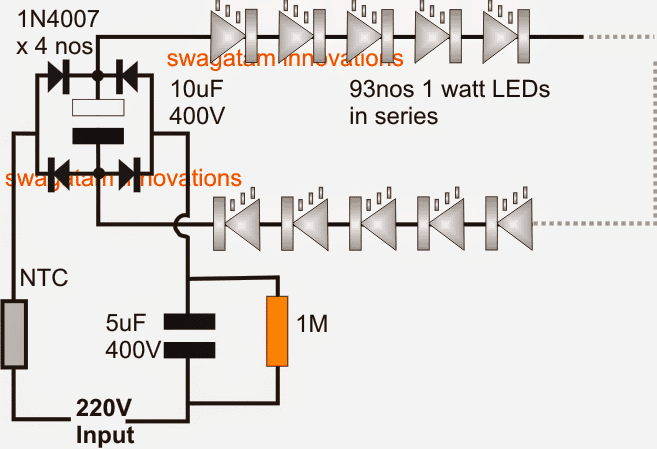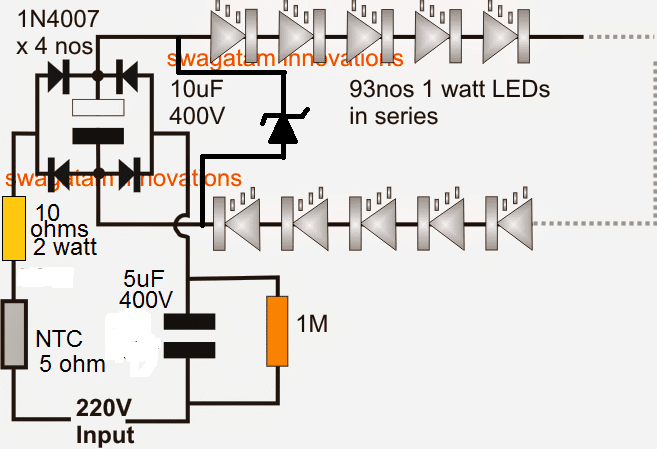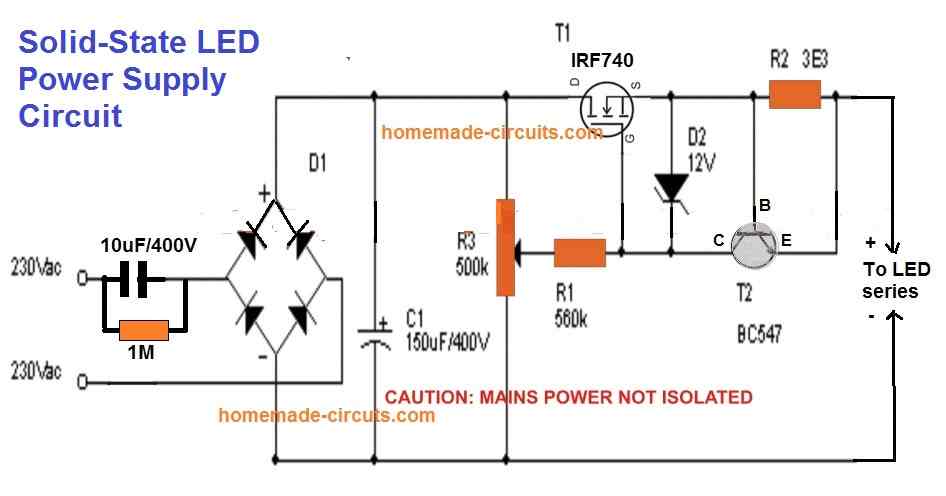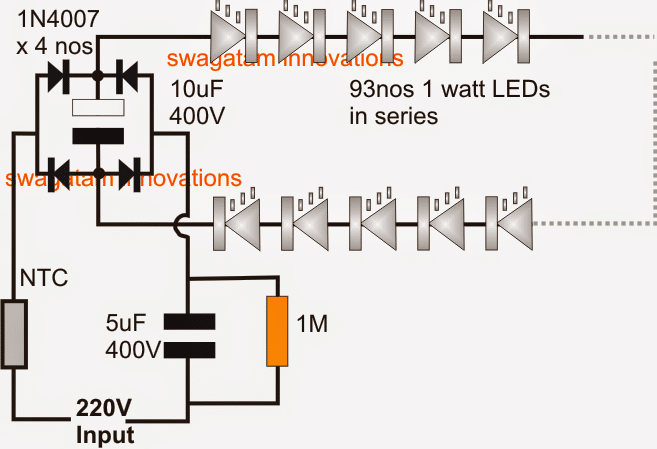In this article I have explained a very simple 100 watt LED bulb circuit using a few high voltage capacitors. The entire circuit could be built at a cost less than $25.
I have already discussed many capacitive type of transformerless power supply circuits in this blog, however all these suffers from a couple of issues, namely lack of optimal current output, and surge inrush vulnerability.
Using Capacitive Power Supply
Upon studying capacitive power supplies deeply I could conclude a few crucial things regarding these configurations:
Capacitive power supplies are quite like solar panels which work efficiently, at their maximum power point specs when they are operated with their open circuit voltages, otherwise the current specs from these units go through heavy losses and produce highly inefficient results.
In simple words if we one desires to acquire high current outputs from a capacitive power supplies at will, the circuit will need to be operated with a load having a voltage requirement equal to the maximum output of the system.
For example with a 220V input, a capacitive power supply after rectification would produce an output of around 310V DC, so any load assigned with a 310V rating could be operated with full efficiency and at any required current level depending upon the requirement of the load.
If the above condition is satisfied, it also tackles the current inrush issue, since the load is specified at 310V, an inrush of full input voltage now has no effect on the load and the load remains safe even during sudden switch ON of the circuit.
Analyzing the The Design
In the proposed 100 watt LED bulb circuit we employ the same technique as discussed in the above sections.
As discussed, if the input is 220V the load would need to be rated at 310V.
With 1 watt 350mA standard LEDs this would mean adding 310/3.3 = 93 LEDs in series, that's close to 100nos.
A single 1uF/400V capacitor produces around 60mA current at the above specified 310V DC, therefore for achieving the required 350mA more such capacitors will need to be added in parallel, to be precise a total of 350/60 = 5 capacitors, that could also be a single 5uF/400V but should be a non-polar type.
An NTC thermistor may be added for extra safety, although it may not be critically required.
Similarly a resistor could be also included to provide extra bit of safety from fluctuating voltage conditions.
The resistance value may be approximately calculated as R = Us - VFd/I = 310-306/.35 = 10 ohm, 1 watt
For a 120V input, the above specs would simply need to be halved, that is use 47nos of LEDs instead of 93, and for the capacitor a 5uF/200V would be enough.
Circuit Diagram
Warning: Circuits I have explained below are not isolated from mains AC, and therefore are extremely dangerous to touch in the powered and open condition. You should be extremely careful while building and testing these circuits, and make sure to take the necessary safety precautions. The author cannot be held responsible for any mishap due to any negligence by the user.

The above diagram can be additionally safeguarded from surge inrush voltages, and mains fluctuations by adding a 10 ohm limiting resistors and a zener diode, as shown below.
Here the value of zener diode should be 310V, 2 watt

Improved design with current control
The following circuit is a foolproof circuit design that will never allow the LEDs to come across a stressful condition. The mosfet and thee associated current control ensure 100% constant voltage and constant current for the connect LED bulb chain.
The number of LEDs in the chain can be adjusted as per the selected voltage, or conversely the voltage can be adjusted as per the selected number of LEDs in the chain.

Note: Please move the capacitor C1 from the existing position to the output terminals of the circuit. Meaning, remove the C1 from across the bridge rectifier and connect it parallel to the LED string. This will drastically eliminate excess stress of the MOSFET, yet provide a filtered DC to the LEDs, increasing the overall efficiency of the design. In this case the voltage rating of C1 can be reduced to the value that's just slightly above the total forward voltage of the series LED string.
